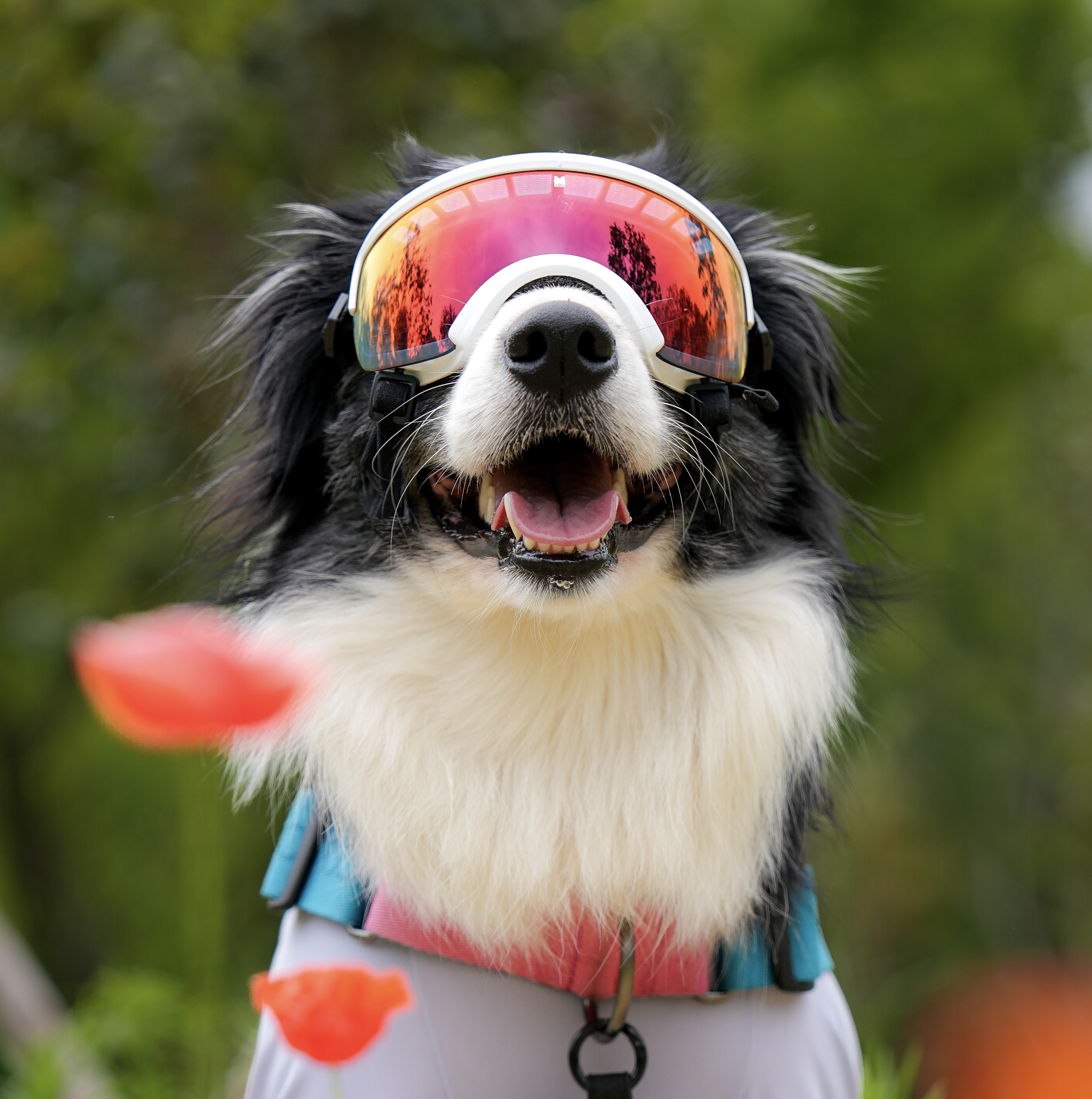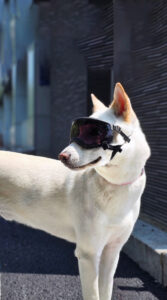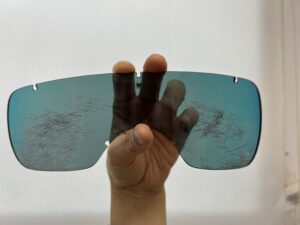“Is it really necessary to buy goggles for my dog with cataracts?”
We hear this question all the time. Many dog parents come to us saying, “My dog squints so much in the sun. I’m wondering if dog goggles would help.” Others share, “Despite using eye supplements regularly, my dog developed cataracts. Now I’m exploring dog sunglasses for cataracts. Do they actually work?”
As pet eyewear specialists, we don’t stop at a simple “Yes, they help.” We believe it’s important to explain why and how protective eyewear for dogs works, especially when it comes to cataracts and eye health.
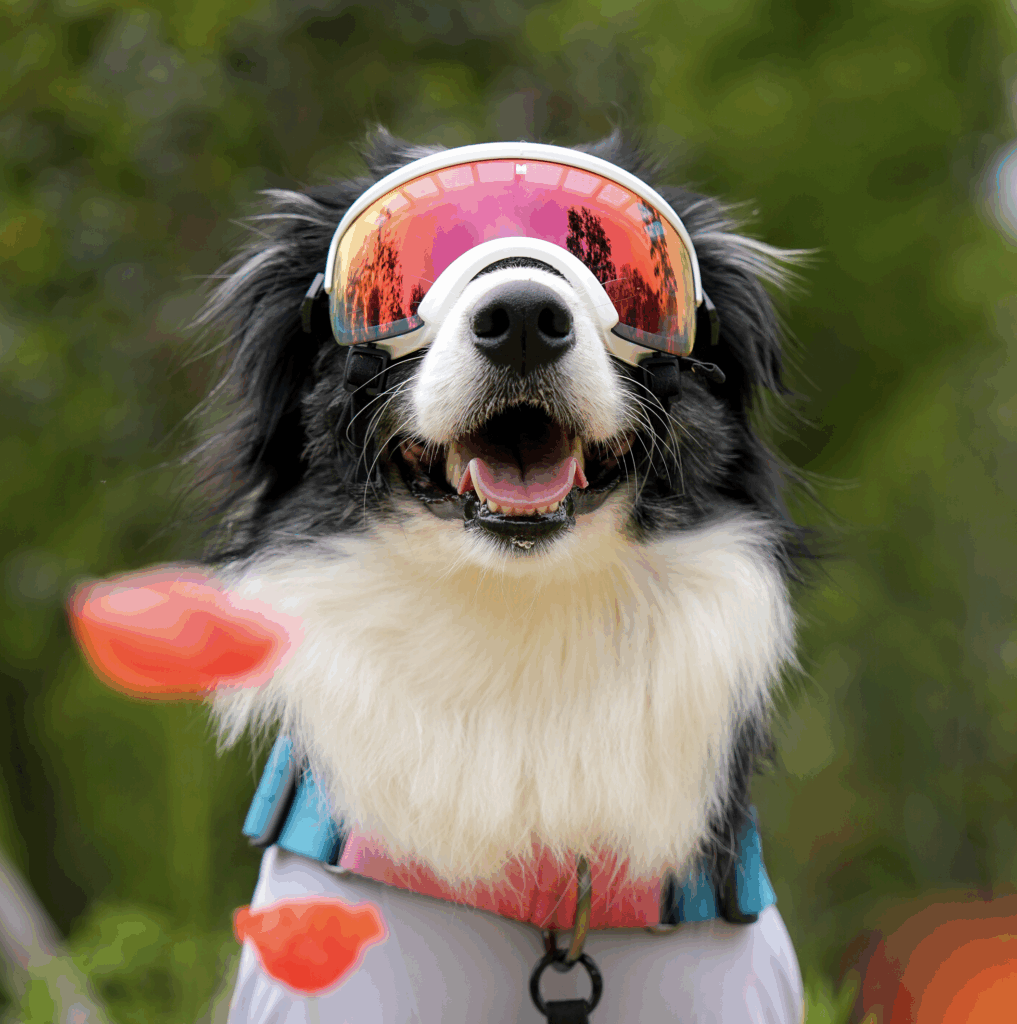
Why UV Protection Is More Critical for Dogs Than Humans
1.Direct Exposure with No Natural Shield
Unlike humans who wear hats or sunglasses, dogs walk with their eyes fully exposed to sunlight. During walks, dogs naturally look up toward their humans and surroundings, increasing direct exposure to UV rays. Without goggles, their eyes absorb more UV radiation every single day.
2. More Vulnerable Eye Anatomy
Canine eyes have larger and thinner lenses than humans, making them more susceptible to UV penetration. They also have shallower eye sockets, which means UV rays can reach deeper into the eye. Dogs lack strong natural antioxidants like glutathione in their lenses, especially in some breeds.
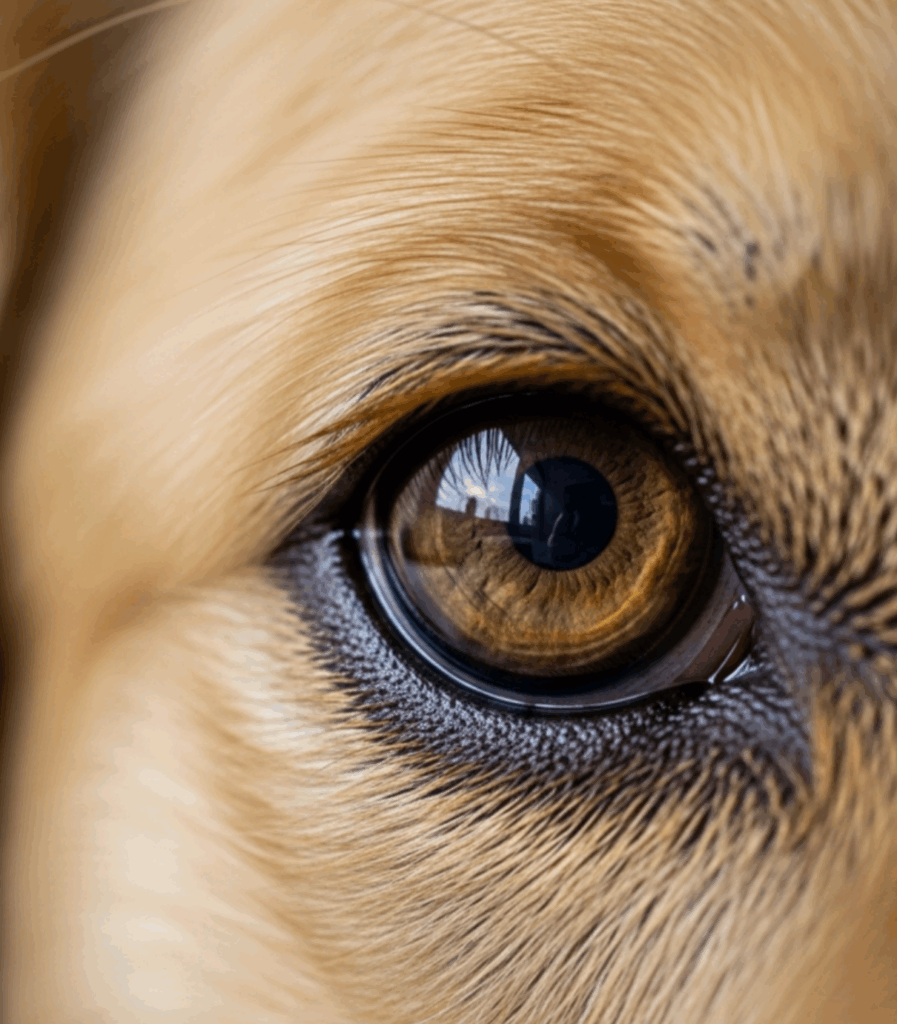
3. Lower Melanin Levels in Light-Colored Eyes
Dogs with blue, gray, or light-colored eyes—like Huskies, Poodles, and Maltese—have less melanin, which serves as a natural UV filter. In particular, dogs with heterochromia (odd eyes) may have one eye almost completely unprotected. This lack of melanin allows more UV rays to damage the inner eye.
4) Heterochromia, Melanin, and the Link to Eye Health
Dogs and cats with heterochromia (odd-colored eyes) often have one eye with little to no melanin. Melanin isn’t just present in the iris—it also exists in deeper parts of the eye, such as the retina, choroid, and tissues around the optic nerve. It plays a critical role in absorbing UV rays and reducing oxidative stress.
When melanin levels are low, as in pale-colored or blue eyes, the eye’s natural UV protection is significantly weakened.
Melanin also acts as a natural antioxidant, neutralizing reactive oxygen species (ROS) that damage tissue. Eyes with low melanin concentration—like those in heterochromia—are more vulnerable to oxidative damage, increasing the risk of cataracts, retinal degeneration, and photosensitivity disorders.
In fact, studies suggest that blue or gray eyes are more sensitive to cataract progression. For this reason, many veterinarians recommend limiting sun exposure and using protective eyewear for pets with heterochromia or light-colored eyes.
What Science Says: UV Damage Leads to Cataracts
A study published in Archives of Ophthalmology (Taylor et al., 1995) revealed that people with higher lifetime exposure to UV-B light had a 60% increased risk of cortical cataracts. Similar patterns have been found in animals. Prolonged UV exposure causes oxidative stress in the lens, damaging its proteins.
When lens proteins clump and oxidize, transparency is lost, and cataracts accelerate. This is why UV protection is not just optional—it’s essential.
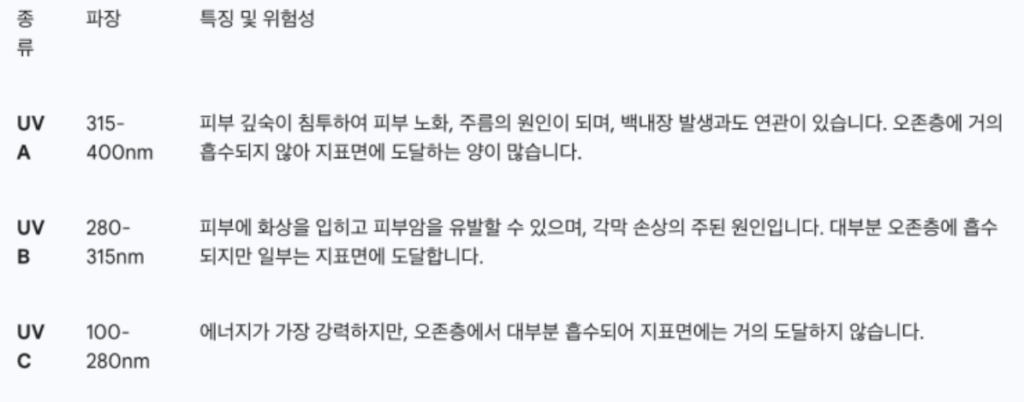
This makes UV protection all the more essential.
If the goggles use materials that inherently block UV rays—not just surface coatings—they can provide consistent protection even under intense sunlight. That level of protection plays a real role in slowing cataract development by preventing daily UV damage to the lens.

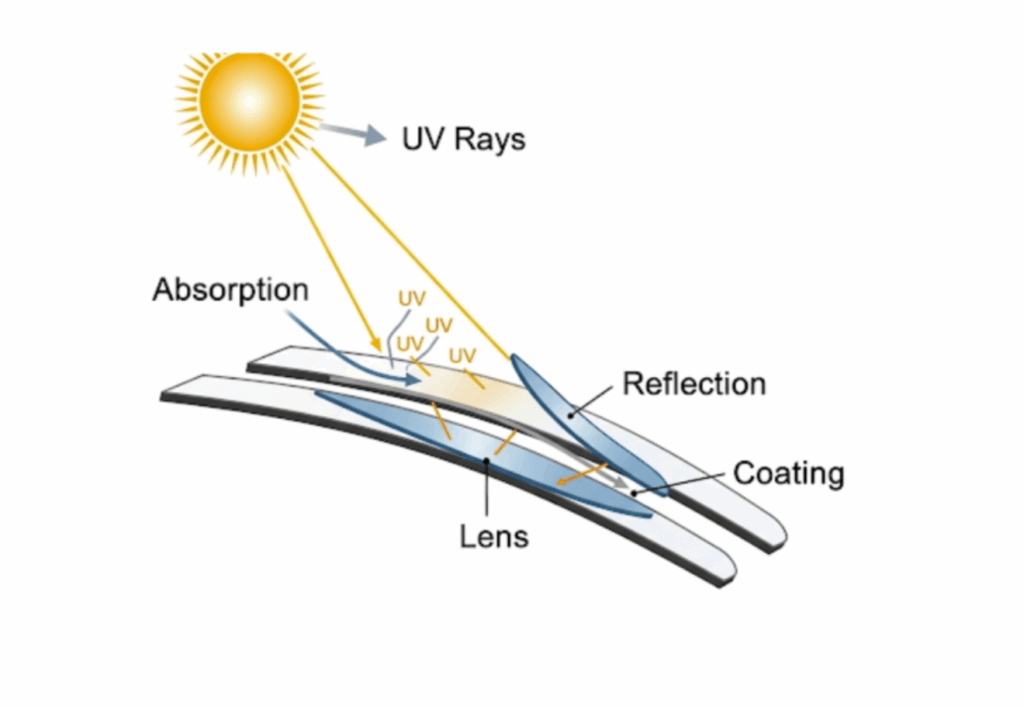
- Sun & UV Rays:Ultraviolet (UV) rays are emitted from the sun, shown in the top left of the illustration.
- Lens: (Lens): UV rays travel toward the surface of the goggle lens.
- Absorption: The lens material absorbs UV rays, preventing them from reaching the eye. In the diagram, this is shown by UV rays entering the lens and disappearing.
A special coating on the lens reflects UV rays like a mirror. In the illustration, this is represented by UV rays bouncing off the lens surface with outward arrows.
How Dog Cataract Goggles Help
Dog cataract goggles are not just for style. They function like sunglasses for dogs, using lenses made from UV-absorbing materials. The best dog goggles for sunlight absorb and reflect UV rays, preventing them from reaching the inner eye.
Many lower-end products rely on coatings, but once scratched, their UV protection wears off. High-quality goggles use materials that inherently block UV rays—even after wear and tear.
How to Choose the Right Dog Goggles
Choosing protective eyewear for dogs isn’t just about aesthetics. Here’s what to look for
- Optically engineered lenses: No distortion or glare that could confuse your pup
- UV-blocking material (not just coating)
- Anti-fog design
- Snug fit for your dog’s facial curve
- Straps that avoid pressure on the muzzle
- Stays on even during shakes or zoomies
Why We Created Kyunglas: A Goggle That Truly Protects
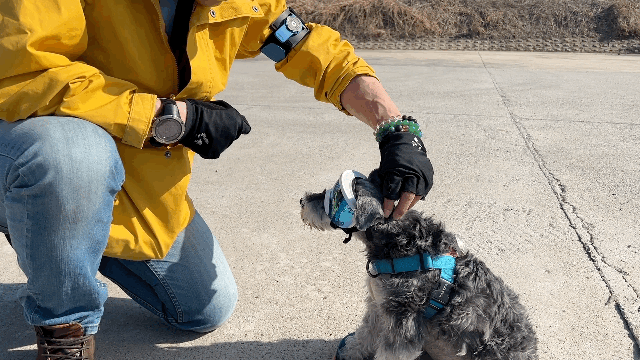
We spent over 2.5 years testing with more than 1,000 dogs to develop Kyunglas—our answer to functional, comfortable dog cataract goggles. It was inspired by our own senior dog who disliked harnesses and headgear. We wanted to protect her eyes, without adding stress.
The result? Goggles that don’t just sit pretty—they protect, fit well, and are designed with the unique anatomy of a dog’s face in mind. They are truly a piece of pet eye protection gear that we’d trust for our own family.
on’t wait for symptoms to worsen. If your dog is squinting in the sun or has light-colored eyes, early UV protection can make a difference. Dog cataract goggles aren’t a fashion item—they’re a smart, functional investment in your dog’s long-term eye health.
